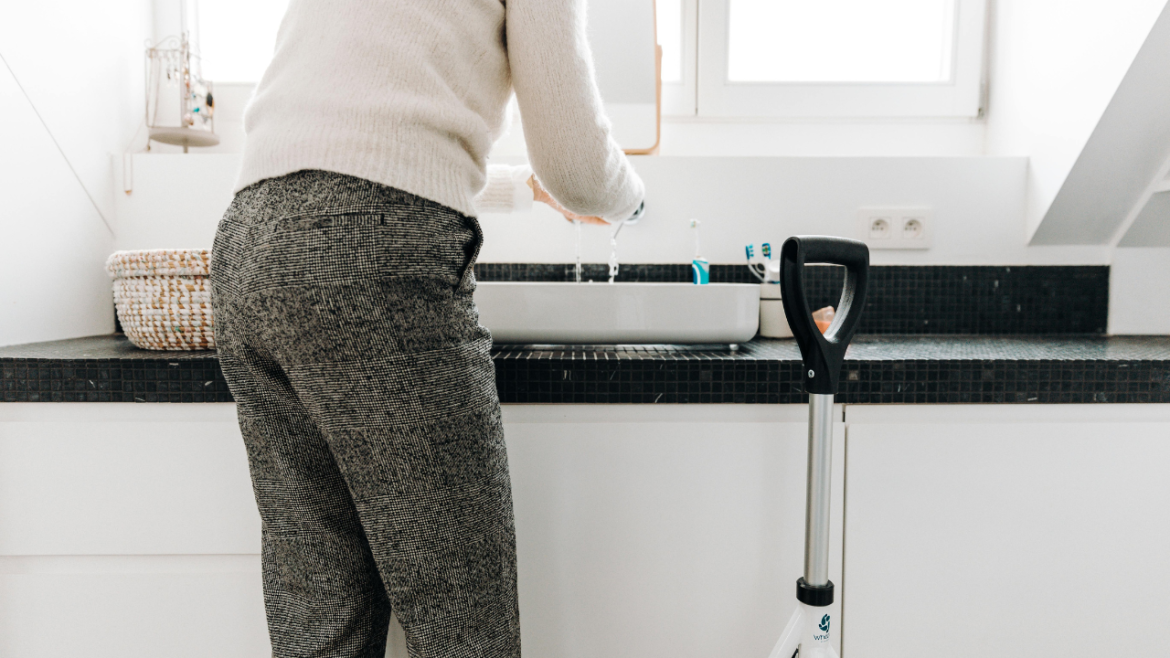Bathroom Safety Tips For Seniors
For many seniors, the bathroom—once a simple space of privacy and routine—can become one of the most dangerous areas in the home. Wet floors, tight corners, and slippery surfaces can create hazards that lead to serious injuries.
Yet with awareness, preparation, and compassion, families can transform the bathroom from a place of risk into a place of safety and independence. Helping seniors feel secure in this personal space not only prevents accidents but also preserves their confidence and dignity.
Understanding Why Bathroom Safety Matters
The bathroom is often overlooked when considering home safety, yet it is where most falls occur among older adults. Age-related changes such as weakened balance, reduced vision, and slower reflexes make even small obstacles dangerous. A single slip can lead to broken bones or lasting pain, which can significantly reduce mobility and independence. Understanding these risks helps caregivers and families recognize that bathroom safety is not about restricting freedom—it is about empowering seniors to live comfortably and confidently.
The emotional side of this issue cannot be ignored. For seniors, losing control of basic tasks such as bathing or grooming can feel deeply discouraging. It can create embarrassment, frustration, and fear. Establishing a safe environment helps restore a sense of normalcy. When seniors know that their bathroom is secure, they can move through their daily routines without hesitation or anxiety. This reassurance is as important to mental well-being as it is to physical safety.
Creating Stability and Support
The first step to improving bathroom safety is ensuring stability. Many seniors struggle with balance, and bathrooms are full of hard surfaces that do not forgive mistakes. Installing sturdy grab bars near the toilet, shower, and bathtub can provide vital support during movement. These fixtures act as steady anchors, helping seniors maintain balance when standing, sitting, or stepping in and out of the tub.
In addition, non-slip mats can make a dramatic difference. Wet tile floors are one of the most common causes of falls. Soft rubber mats or adhesive strips reduce slipperiness while also providing cushioning in case of missteps. Even the smallest adjustment, such as ensuring that rugs are secure, can make a life-changing impact. Safety often comes from details, and each precaution taken reflects care, thought, and love.
Lighting also plays a critical role. As vision changes with age, shadows and poor illumination can turn simple movements into dangerous guesses. Bright, even lighting ensures that seniors can see clearly and move with confidence, even during the night. Motion-sensor lights can be especially helpful for those who may wake frequently, eliminating the need to fumble for switches in the dark.
The Importance of Comfort and Accessibility
Comfort and accessibility go hand in hand with safety. The height of toilets and sinks can make a significant difference for seniors with limited mobility or joint pain. Installing a raised toilet seat or adjustable sink can reduce the strain caused by bending or stretching. When the bathroom accommodates their physical needs, seniors can move naturally and without discomfort.
Showers are another area where accessibility changes everything. Replacing a traditional bathtub with a walk-in shower removes the high step that often poses a challenge. A built-in shower seat provides stability and relaxation, allowing seniors to bathe independently without the fear of falling. Handheld showerheads also make bathing easier and more flexible, transforming what was once a stressful experience into one of comfort and dignity.
These changes are not just practical—they are deeply emotional. Independence is tied to self-esteem, and when seniors can care for themselves safely, they regain confidence in their abilities. Every adaptation made in the bathroom serves as a silent promise: they are still capable, valued, and supported.
Preventing Fatigue and Encouraging Safety Habits
Fatigue increases the likelihood of falls, and bathrooms are often the places where seniors push themselves too hard. Encouraging them to take their time, use stable supports, and avoid rushing can prevent unnecessary accidents. Keeping essential items like towels, toiletries, and medications within easy reach helps minimize stretching or bending that could lead to instability.
Safety also depends on consistent habits. Seniors who know their bathroom is secure are more likely to follow safe routines, while caregivers can rest easier knowing that every precaution has been taken. Simple consistency—using the same path, the same grips, and the same lighting—helps reinforce familiarity and confidence. Over time, the bathroom becomes a predictable, peaceful environment rather than a source of worry.
A Space of Safety and Serenity
Bathroom safety for seniors is about more than preventing injuries; it is about restoring peace of mind. It is about creating a space where aging does not feel limiting but empowering. The goal is not to remove independence, but to strengthen it through thoughtful design, careful attention, and love.
When a bathroom becomes safe, it also becomes serene. It becomes a place where seniors can care for themselves without fear, where they can begin and end their days with comfort. With compassion and preparation, families can ensure that this everyday space serves as a reminder that aging with grace and safety is not only possible but beautiful.

